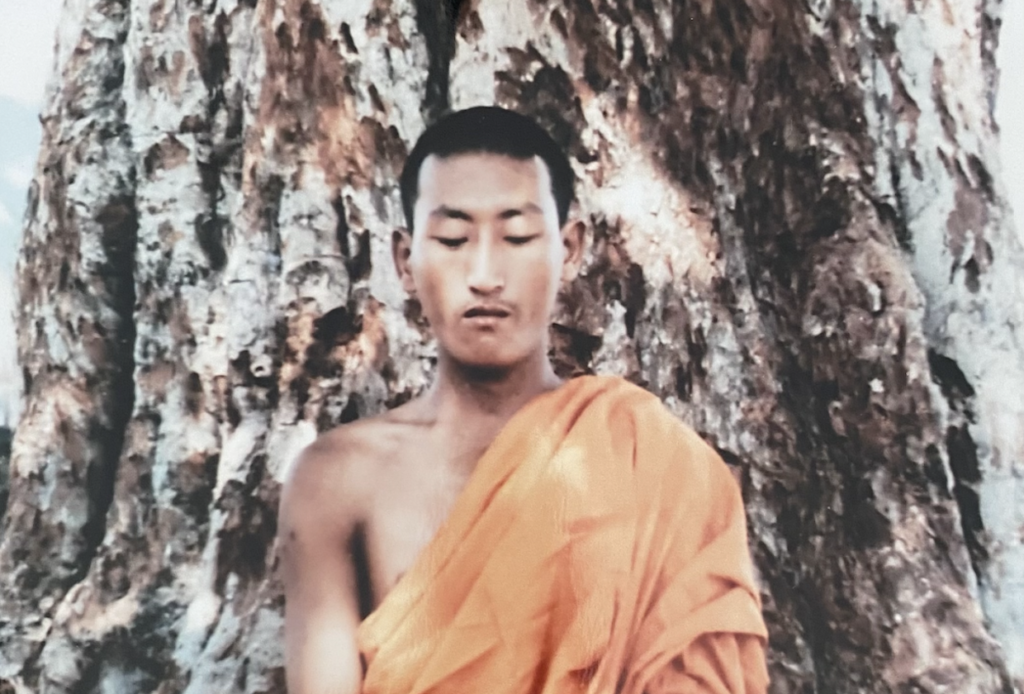A Guide to the Seven-Point Vairocana Posture.
Meditation is a practice of showing up for ourselves and for others. It is a practice of familiarizing ourselves with our natural condition and getting to know our true nature.
In Tibetan, they use the term Kuntuzangpo (Skt. Samantabhadra) to identify our true nature. Kuntu- means always or innate, since the very beginning. Zangpo means goodness, value, worth, or dignity. So Kuntuzangpo is this innate dignity, innate sense of self worth, goodness, or value. And this is our true nature, our natural condition.
So often we struggle to recognize this sense of innate dignity or value. I personally often find myself looking for recognition or affirmation from others to justify my sense of self-worth and dignity, but in our meditation we have the opportunity to recognize that dignity in ourselves. To develop trust in our own natural condition. To find this original source of value and goodness.
This is a gift to ourselves, but it is also a gift that we can share with others. We can carry that dignity and goodness into our relationships. We can be present with others in a natural and open way, not having to project our own agenda or neurosis onto the situation. We can be present as we are, knowing that is enough. That we are enough.
And that is a gift that is beyond value.
So when we take our seat in meditation, we should take a moment to connect with our true nature and this sense of innate dignity. We should sit with integrity, knowing that the practice we are doing is important and has significant meaning and purpose for our life.
How we sit
In his Stages of Meditation, Kamalashila writes:
“Then, they should seat themselves on a comfortable seat, either in the full lotus posture of Vairochana or the half-lotus posture. Their eyes should not be open too wide, nor too tightly closed, but focused on the tip of the nose. Their body should not be bent forward or backward, but kept straight, and their attention turned inwards. Their shoulders should rest evenly, and the head should not be tilted back or forward or to either side. The nose should be in line with the navel. The teeth and lips should rest in their natural state, and the tongue should touch the upper palate. Inhalation and exhalation should be just barely discernible, gentle, soft and natural, without undue noise, effort or agitation.”
You’ve seen pictures of people meditating and there is a good reason to sit in traditional meditation posture- it has structural integrity, naturally calms the mind, and confers a sense of dignity and ease. You likely won’t sit comfortably at first because Westerners are not used to sitting this way, but persistent practice over time yields quick adaptations in the hips and knees as you learn to relax.
The traditional meditation posture is known as the Seven-Point Vairocana Posture (Skt. saptadharma-vairocana; Tib. རྣམ་སྣང་ཆོས་བདུན་, Wyl. rnam snang chos bdun):
1. Sit cross legged. If you cannot sit in half or full lotus, just make sure to elevate the hips enough so they are parallel or above the knees. High knees equals pain.
2. Hands in the lap or on the knees. Relax the right hand on top of the left in your lap, or place your hands palms down on the knees.
3. Back straight. Don’t slouch, but don’t be too rigid either. Straight, but relaxed.
4. Shoulders open. Again, don’t slouch, it causes drowsiness.
5. Head and neck upright, slightly tuck the chin. Imagine touching the crown of your head to the ceiling, then relax.
6. Relax the mouth. The tongue should rest on the upper palate behind the front teeth, the jaw should be relaxed with the teeth slightly apart.
7. Open, steady gaze. So often you see people meditating with their eyes closed, which is fine, but in this tradition we emphasize eyes open, gaze steady and soft. Open and engaged. It is best to start with the gaze down past the tip of the nose, about a foot or two in front of yourself. As you progress, the gaze can come up to the horizon.
If your physical constitution prevents you from sitting in this posture, it is okay to sit in a chair. The key points for sitting on a chair are the same, with two small modifications:
Feet flat on the ground. Hip distance apart, think stability.
Back off the back of the chair. Your hips can touch the back of the chair, but bring your back up straight. Don’t rest back in the chair.
Reclaiming Our Ground
Seated in the seven-point Vairocana posture, our body is relaxed and uncontrived, but immovable like a mountain. Don’t chase after feelings or sensations, simply rest the body, breathing naturally. Don’t itch, don’t alter, don’t adjust. Just relax.
Over time, we will learn to naturally settle into this posture and become friends with ourselves. We learn to be comfortable in our own skin. Being more accepting of ourselves, we can be more present and available for others. Instead of protecting ourselves and hiding our insecurities, we learn to sit with dignity in openness and vulnerability. Like a child learning to walk and falling often, we can learn to walk through the world with this type of posture. Of course we too will fall, and that is why we always come back to our practice.
Learning to check in with yourself, to look into the great mystery of our body and mind, and to gain some understanding of the complexity of this human life- this is one of the greatest gifts that we can give ourselves.
It is also one of the greatest gifts that we can share with the world.

